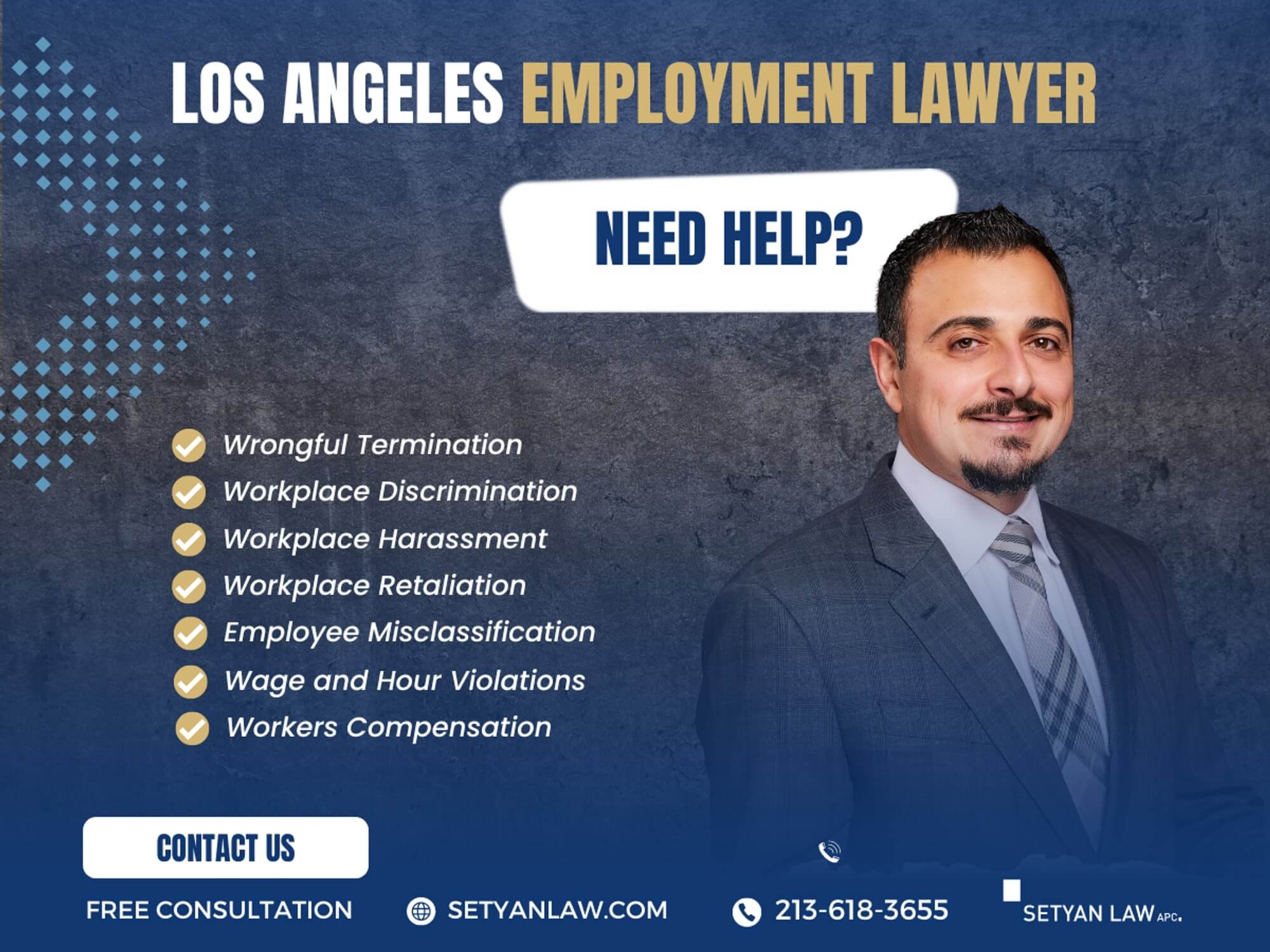Updated June 2, 2025
How to Fight an Insubordination Claim: A Workplace Survival Guide
When those dreaded words leave your supervisor's mouth, the immediate rush of emotions—confusion, anger, fear—can overwhelm your ability to respond effectively. However, your reaction in these crucial first moments can significantly impact the outcome of the situation.
Insubordination accusations aren't merely workplace disagreements. They represent formal claims that you've deliberately disobeyed a direct order or shown disrespect to authority—allegations that can lead to written warnings, suspension, or even termination. For many workers, such accusations come as a complete surprise, often resulting from miscommunication or, in some cases, serving as pretexts for discrimination or retaliation.
Unlike simple performance issues, insubordination carries a stigma that can follow you to future employment opportunities. Therefore, understanding how to properly defend yourself is essential for protecting both your current position and long-term career prospects.
In this comprehensive guide, we'll walk you through the practical steps to effectively fight an insubordination claim, from the initial accusation through potential legal remedies. Whether you're currently facing such allegations or simply want to be prepared, this information provides the foundation you need to protect your rights and professional standing.
What is Insubordination and Why It Matters
Insubordination represents more than just disagreeing with your boss—it constitutes a serious workplace offense that can threaten your job security. Essentially, insubordination occurs when an employee deliberately disobeys or disregards a superior's legitimate directive. Understanding this concept is crucial for anyone facing such accusations.
For an incident to qualify as insubordination, three specific elements must typically be present: first, a superior issues a direct order; second, the employee receives and understands the order; and third, the employee deliberately refuses to obey through explicit statement or nonperformance. This three-part test forms the foundation for most workplace insubordination policies.
Common examples of insubordination
Insubordination manifests in various forms across workplace settings. The most straightforward examples include:
- Direct refusal: Explicitly declining to complete an assigned task within your job responsibilities
- Verbal disrespect: Using offensive language, insults, or mockery toward supervisors
- Passive resistance: Acknowledging instructions but intentionally failing to complete them
- Undermining authority: Publicly challenging management decisions or encouraging others to disregard directives
- Sabotage: Deliberately hindering productivity or interfering with workplace operations
Notably, these behaviors specifically undermine a supervisor's ability to manage effectively. Left unchecked, such conduct can damage team morale, disrupt workplace harmony, and ultimately compromise organizational productivity.
How it differs from simple disagreement
Not every workplace conflict constitutes insubordination. Professional pushback or disagreement represents a fundamentally different dynamic than insubordination. For instance, when an employee approaches their manager to discuss concerns about instructions or suggests alternative approaches, this represents healthy workplace communication rather than defiance.
Furthermore, employees may legitimately refuse directives under certain circumstances without committing insubordination. These exceptions typically include:
- Refusing tasks that are illegal, unethical, or unsafe
- Declining responsibilities outside one's job description
- Being unable to complete tasks due to lack of training or resources
- Misunderstanding instructions rather than willfully disobeying them
The primary distinction lies in intent—insubordination requires willful defiance rather than good-faith disagreement or inability to comply.
When insubordination becomes a legal issue
Insubordination carries significant legal implications for both employers and employees. For employers, properly documenting insubordinate behavior becomes essential, particularly if termination results. Consistent application of disciplinary policies helps protect against wrongful termination claims.
From an employee perspective, understanding legal protections is vital. Several laws may shield workers from insubordination accusations under specific circumstances:
- Whistleblower protections for reporting illegal activities
- Occupational Safety and Health Administration (OSHA) safeguards for refusing unsafe work
- National Labor Relations Act protections for employees engaged in protected concerted activities
Additionally, if an insubordination claim appears to target employees based on protected characteristics or serves as retaliation for exercising legal rights, employees may have grounds for discrimination or wrongful termination claims.
The distinction between legitimate insubordination and protected behavior often hinges on specific workplace contexts, documented policies, and legal standards—making proper understanding of this concept essential for anyone facing such accusations.
First Steps After Being Accused
Receiving an insubordination accusation can feel like a professional crisis. Your immediate response plays a crucial role in determining the outcome of this challenging situation. Taking methodical steps in the aftermath of such allegations can mean the difference between resolving the issue or facing serious career consequences.
Stay calm and avoid confrontation
The moment you receive an insubordination accusation, your first instinct might be to react emotionally. Nevertheless, maintaining composure is absolutely essential. When confronted with such allegations, take a deep breath and resist the urge to respond defensively or aggressively. An emotional reaction can transform a manageable situation into a far more serious problem.
"Your initial response can significantly influence the outcome, underscoring the importance of handling this delicate situation with care and tact," note employment experts . Reacting with anger or defensiveness might not only validate the original accusation but could potentially lead to additional complaints.
If you receive a written notice about insubordination charges, refrain from immediately confronting the supervisor who issued it. Moreover, avoid discussing the situation with coworkers, as this could complicate matters further . Even if you believe the accusation is completely unfounded, responding professionally demonstrates your commitment to workplace standards.
Ask for clarification on the accusation
Once you've regained your composure, your next step should be gathering comprehensive information about the allegation. Seek clarification regarding:
- The specific incident or behavior in question
- When and where the alleged insubordination occurred
- Which directive you supposedly refused to follow
- Who witnessed the alleged incident
"Seek clarification on the specifics of the accusation, ensuring you fully understand the claim before responding," advises legal experts . In most cases, this information should be provided in writing, but if not, request written documentation of the accusation for your records.
You might approach your supervisor directly or consult with your human resources department to review the claim in your personnel file . Having complete information allows you to make informed decisions about your next steps and helps you prepare an appropriate response.
Understand your company's disciplinary process
Simultaneously, familiarize yourself with your organization's disciplinary procedures. Companies typically have established protocols for handling insubordination claims that outline:
- The investigation process
- Your rights as an employee
- Timeframes for responding to allegations
- Appeals procedures
- Potential consequences
Understanding this process gives you clarity about what to expect and helps you prepare accordingly. Many companies follow progressive disciplinary approaches, beginning with verbal warnings before escalating to written warnings, suspension, or termination for repeated or serious offenses .
Carefully review your employee handbook or consult with HR to understand the specific policies at your workplace. Additionally, be aware that in some cases, you may have the right to have a representative present during disciplinary meetings .
Throughout this process, document everything—keep copies of all communications related to the accusation, notes from meetings, and your recollection of relevant events. This documentation could prove invaluable if you need to build a defense or if the situation escalates to formal proceedings.
Building Your Defense: Evidence and Rebuttal
After facing an insubordination accusation, your next critical step involves building a solid defense. While emotions might run high, constructing a methodical response backed by evidence offers your best path forward.
Gather witness statements and documentation
First and foremost, assemble all available evidence that challenges the insubordination claim. This evidence collection forms the foundation of your defense and should be comprehensive:
- Witness statements: Obtain written or recorded statements from colleagues who observed the incident
- Visual evidence: Secure any security camera footage that might have captured the interaction
- Contemporaneous notes: Provide any notes you wrote during or immediately after the incident
- Job description: Include your official job description to demonstrate you were acting within your responsibilities
- Email communications: Gather relevant emails that provide context for the situation
Documentation serves two critical purposes: it helps clarify what actually happened and establishes a paper trail should the matter escalate. As you collect evidence, focus specifically on information that contradicts your employer's version of events or provides important missing context.
Write a clear and factual rebuttal letter
Subsequently, draft a detailed rebuttal letter addressing the insubordination claim. An effective rebuttal letter typically follows this structure:
- Clearly summarize the original accusation
- Present your account of what actually occurred
- Outline any relevant context missing from the original complaint
- Reference your supporting evidence specifically
- Request appropriate resolution (such as removal of the reprimand)
"Keep a copy of this letter for your personal record and request that a copy be kept in your employee file alongside the original insubordination letter" . Your rebuttal should maintain a professional tone throughout—avoid emotional language or personal attacks, as these can undermine your credibility.
When addressing specific points in the accusation, be precise and fact-based. For example: "You indicate that I'm frequently late, however, the attached time sheet summary for the last six months demonstrates I was late on only two occasions due to meetings running long".
Submit your rebuttal to HR or supervisor
Ultimately, ensure your rebuttal and supporting evidence become part of your official personnel file. The submission process typically involves:
- Deliver the rebuttal package to your HR department representative
- Alternatively, submit it to the supervisor of the person who issued the insubordination claim
- Consider sending via certified mail to create a delivery receipt
If your employer refuses to accept your rebuttal, sending it through certified mail creates documentation that you attempted to respond to the allegations . Many companies have established policies requiring rebuttals to be included in personnel files alongside disciplinary actions.
Throughout this process, maintain professionalism and follow your company's established procedures. While building your defense independently is important, consulting with an employment attorney can provide valuable guidance, especially for serious accusations that might affect your career long-term.
When to Seek Legal Help
While many insubordination claims can be resolved internally, some situations require legal intervention. Knowing precisely when to consult an attorney can make the difference between protecting your career and suffering unwarranted consequences.
Signs the claim may be retaliatory
According to the Equal Employment Opportunity Commission (EEOC), retaliation is the most frequently alleged basis of discrimination in the federal sector . An insubordination claim might be retaliatory if it follows your involvement in legally protected activities, such as:
- Filing or participating in a discrimination complaint
- Reporting safety violations or illegal activities
- Refusing to follow orders that would result in discrimination
- Requesting accommodation for a disability or religious practice
Be alert to these warning signs that an insubordination claim might be retaliatory:
- Sudden negative performance evaluations after years of positive reviews
- Being excluded from meetings, training, or workplace events
- Reassignment to less desirable positions or shifts
- Increased scrutiny of your work or micromanagement
- Reduction in hours, pay, or responsibilities
How an employment lawyer can help
Employment attorneys provide critical support when facing serious insubordination claims. They analyze the specifics of your case, advise on your rights, and develop defense strategies tailored to your situation . Legal representation offers several advantages:
- Emotional support and advocacy throughout the dispute resolution process
- Protection from employer coercion that might pressure you into accepting unfavorable terms
- Leveling the playing field against employers who typically have legal teams at their disposal
- Case assessment to determine if the claim violates your rights or constitutes wrongful termination
An attorney can identify whether your case involves retaliation for protected activities like whistleblowing, which could strengthen your position .
What to expect from legal consultation
Initial legal consultations typically involve a thorough review of your situation. The attorney will:
- Assess the circumstances surrounding the insubordination claim
- Review relevant documentation (emails, performance reviews, company policies)
- Evaluate potential violations of employment laws
- Outline possible courses of action
Many employment lawyers recommend seeking consultation immediately after receiving a benefit denial or disciplinary action . Early intervention often leads to better outcomes, since plan administrators must make claim decisions within specific timeframes.
In some cases, negotiation or mediation with your employer might resolve the situation without litigation . Throughout this process, your attorney serves as your advocate, ensuring your voice is heard while protecting your legal rights.
Taking Further Action If Needed
Sometimes internal resolution isn't possible, requiring employees to take decisive legal steps when facing unfair insubordination claims. Indeed, formal legal action becomes necessary when all other avenues fail to protect your rights in the workplace.
Filing a complaint or lawsuit
If you believe the insubordination accusation stems from discrimination or retaliation, you have the right to file an official complaint. Private sector employees can contact the Equal Employment Opportunity Commission (EEOC), whereas federal government employees must initially consult with an EEO counselor at their agency. However, if your case is good you should always contact a good employment lawyer beforehand, so the case is filed correctly at every stage. The Wage and Hour Division also investigates employment complaints, maintaining complainant confidentiality throughout the process.
Legal grounds for complaints often include:
- Retaliatory actions after engaging in protected activities
- Discrimination based on protected characteristics
- Violation of labor laws or safety regulations
- Breach of employment contract terms
Your employer cannot legally retaliate against you for exercising these rights or cooperating with an investigation . Depending on the severity of your case, an employment attorney might recommend filing a lawsuit after exhausting administrative remedies.
Understanding wrongful termination
When insubordination accusations lead to job loss, you may have grounds for wrongful termination if the firing violates your employment contract, discriminates against protected classes, or constitutes retaliation under labor laws . Certain categories of insubordination are legally protected—for instance, refusing to perform illegal tasks falls under the "wrongful termination in violation of public policy" doctrine.
To establish a wrongful termination case, you must demonstrate the accusation served as a pretext for an illegal firing . Employment discrimination cases often hinge on proving the employer's stated reason (insubordination) wasn't the actual motivation behind termination.
Keeping records of all interactions
Documentation becomes absolutely crucial if you pursue legal action. Legal experts emphasize that "documentation is a crucial aspect in employment discrimination and retaliation cases" as it provides evidence of discriminatory behavior and helps establish patterns .
Maintain comprehensive records including:
- Detailed journal entries of all workplace incidents
- Copies of emails and written communications
- Witness statements and personal notes
- Records of previous performance evaluations
- Documentation of any complaints filed
Importantly, keep personal copies of all documentation and forward work emails to a personal address, as employers typically restrict access to company systems upon termination . This evidence forms the foundation of any potential legal action and substantially strengthens your position during settlement negotiations.
Conclusion
Facing an insubordination claim represents a critical juncture in your professional journey. Quick, strategic action often determines whether such allegations derail your career or become manageable workplace challenges. Throughout this guide, we've explored the multifaceted nature of insubordination and outlined practical steps to protect your professional standing.
Documentation stands as your strongest ally when confronting these accusations. Evidence collection, witness statements, and detailed records create a factual foundation that can effectively counter unfounded claims. Your written rebuttal must present a clear, objective narrative that addresses specific points of contention without emotional language.
Professional conduct throughout the process significantly impacts outcomes. Emotional reactions, regardless of how justified they might feel, typically strengthen the case against you. Calm, measured responses demonstrate your commitment to workplace standards even while defending your position.
Legal protection becomes necessary when insubordination claims mask discriminatory or retaliatory motives. Signs such as sudden negative evaluations after years of positive feedback or increased scrutiny following protected activities warrant attorney consultation. Employment lawyers level the playing field against companies with extensive legal resources.
Finally, remember that legitimate disagreement differs fundamentally from insubordination. Your right to refuse illegal, unethical, or unsafe directives remains protected under various laws. This distinction matters tremendously when building your defense.
Armed with knowledge about proper procedures, documentation requirements, and legal options, you can navigate insubordination accusations with confidence. Although challenging, these situations often reveal organizational issues that extend beyond individual employee conduct. Your professional approach, thorough evidence collection, and strategic response protect not just your current position but your long-term career trajectory as well.
Call Setyan Law at (213)-618-3655 to schedule a free consultation.







